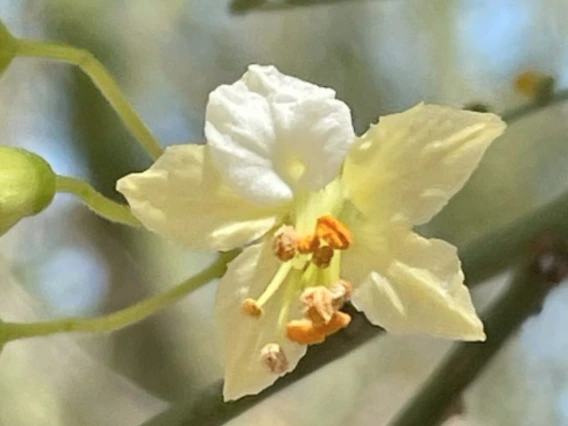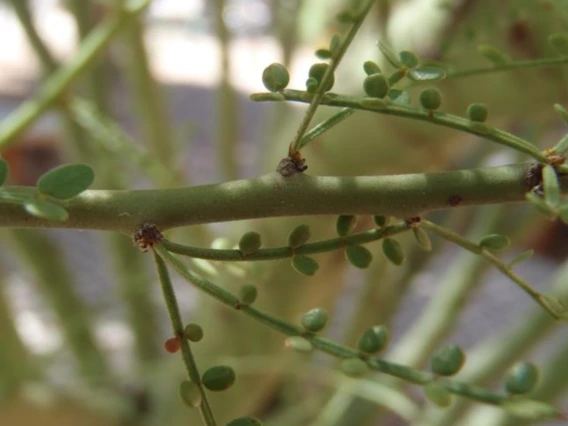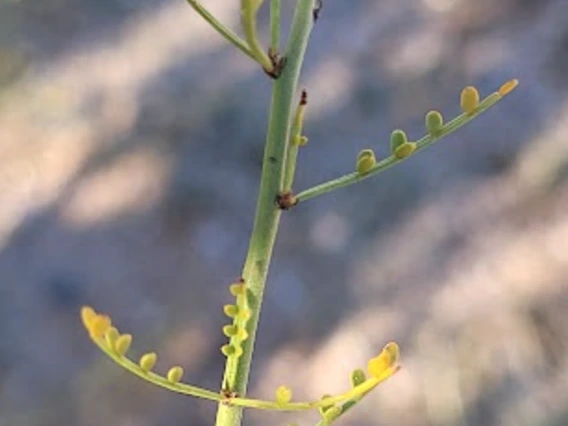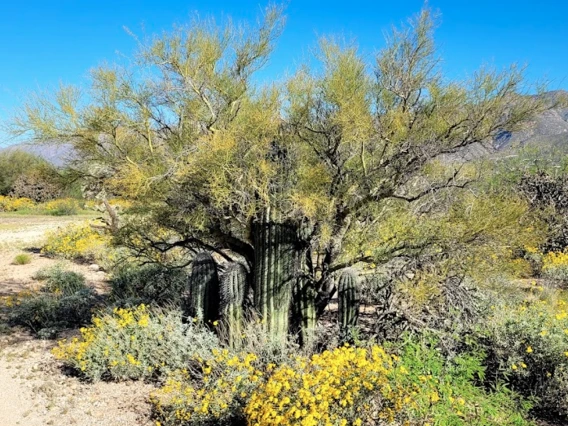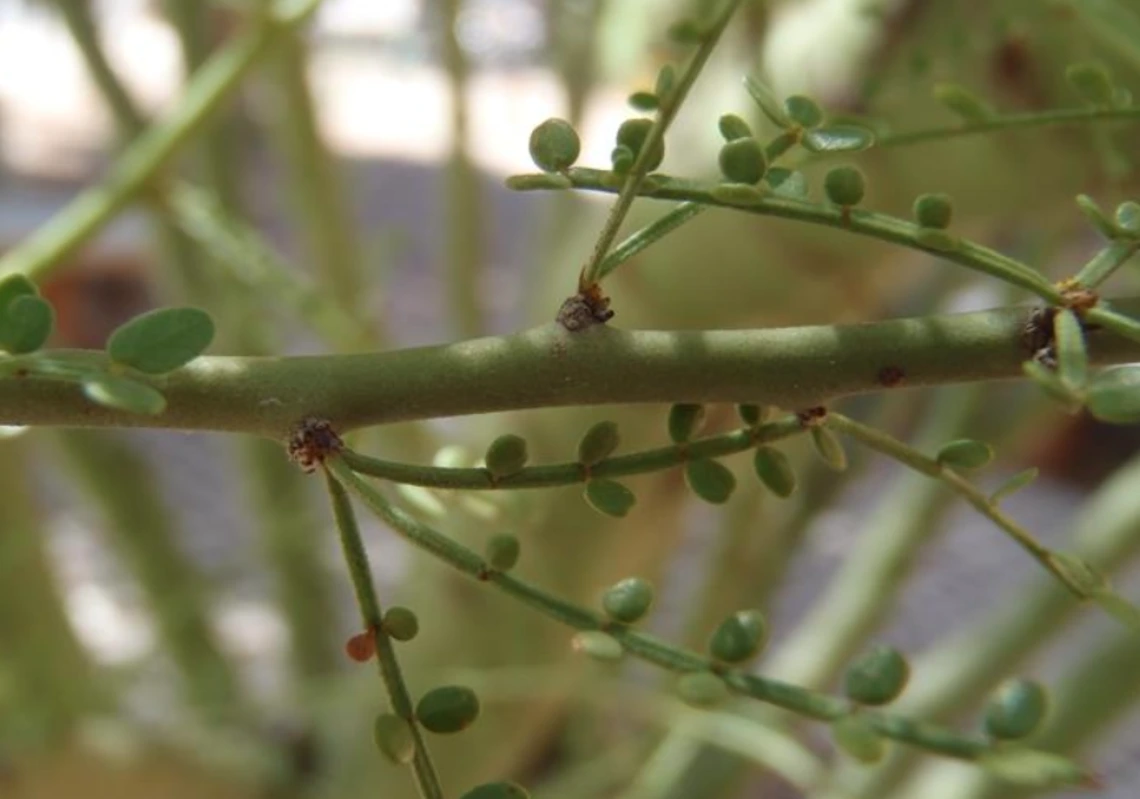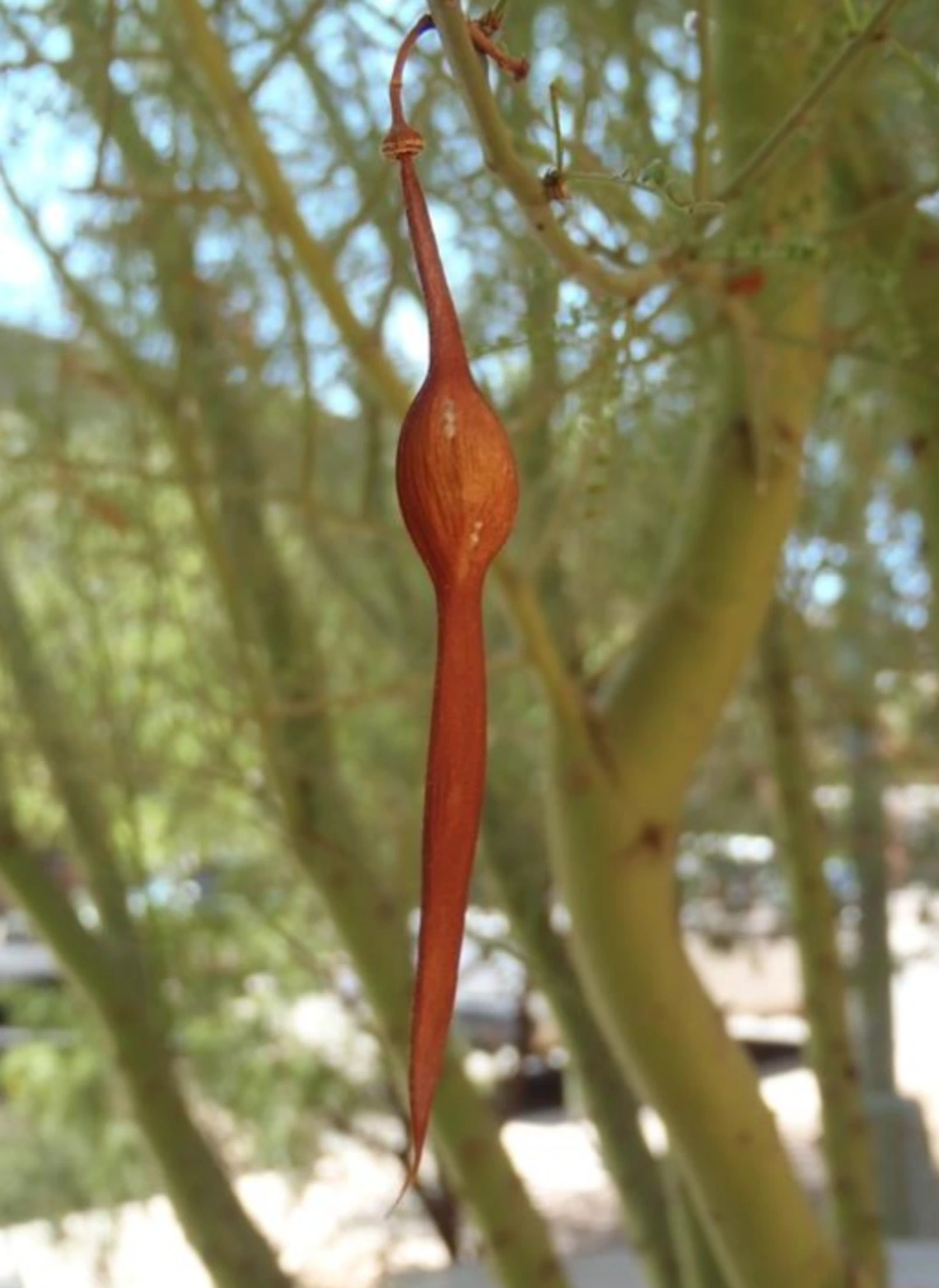Family: Fabaceae
Compound: Par mic
Geographic Origin: extreme southwestern US, northwestern MX
Characteristics: A small drought-deciduous tree with a multi-trunked form, generally growing from 4.9-7.6m (16-25ft) in height. The bark on the trunk is smooth, yellow-green and photosynthetic. The trunk and the stems are many-branched, forming an open spreading canopy. Stem tips end in a sharp point. Leaves are deciduous during extreme heat and drought periods, alternately arranged, pinnately compound, green or yellow green, with each pinnae having 4-7 leaflets. Flowers appear in spring, are mostly yellow with a white-cream banner petal, and about 2.5cm (1in) across. Fruit is a short, soft legume pod about 5-7.6cm (2-3in) long with constrictions between the seeds.
Natural History: Grows on dry rocky hillsides and mesas at 150-1066m (500-3,500ft) in elevation. In the Sonoran Desert, it is the most common of the tree species and is considered an indicator species.
Cultivation Notes: Easily grown from seed. Prefers full sun and well-draining soils. Once established, minimal to no supplemental water is required, though it may help maintain a fuller appearance. This plant is somewhat susceptible to both the parasitic mistletoe and to palo verde beetles. A great choice for landscaping and native gardens because of its attractive green bark, and vibrant yellow flowers. Seeds and flowers are important food sources for many native animals.
For general plant propagation information, click here
Ethnobotany: The seeds of this species were a valued food source for many indigenous peoples. Some grind the seeds into a fine flour, which is then added to water to make a soup or drink. They can be eaten both raw and roasted. Used in landscaping at least in some portions of its native range due to its attractive appearance and tolerance of local conditions.
Citations:
Walters, James E, and Balbir Backhaus. Shade and Color with Water-Conserving Plants. Timber Press, 1992.
Southwest Desert Flora Retrieved June 23, 2024.
Native American Ethnobotany University of Michigan. Retrieved June 23, 2024.
SEINet Arizona – New Mexico Chapter. Retrieved June 23, 2024.


